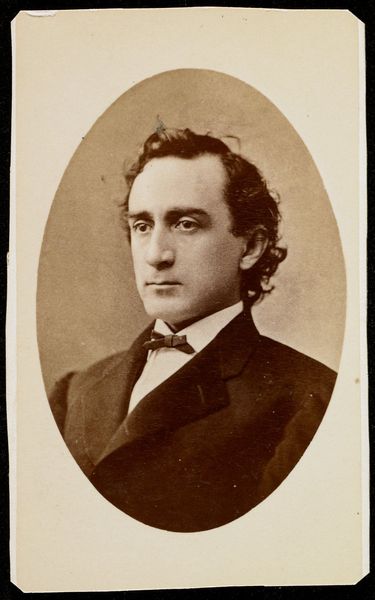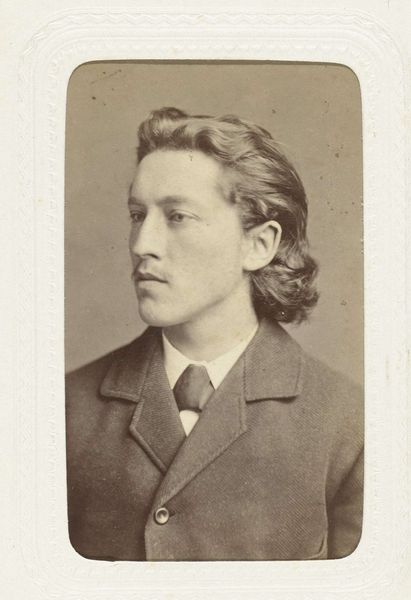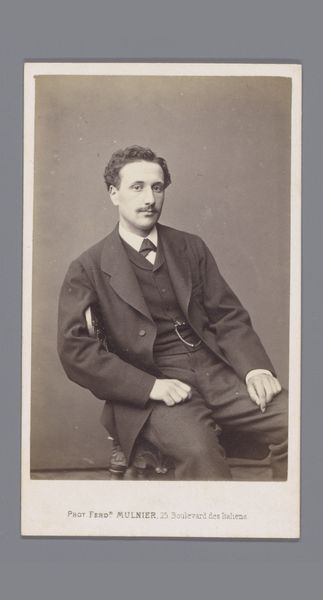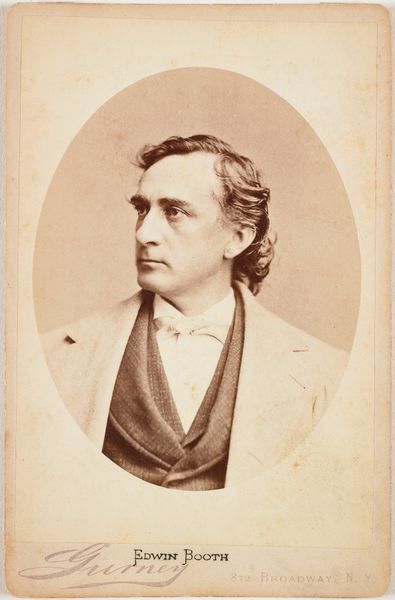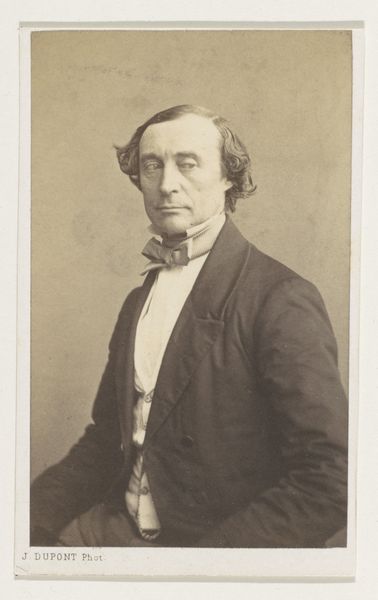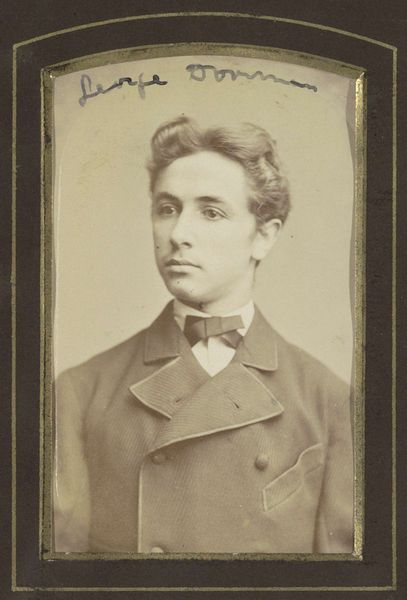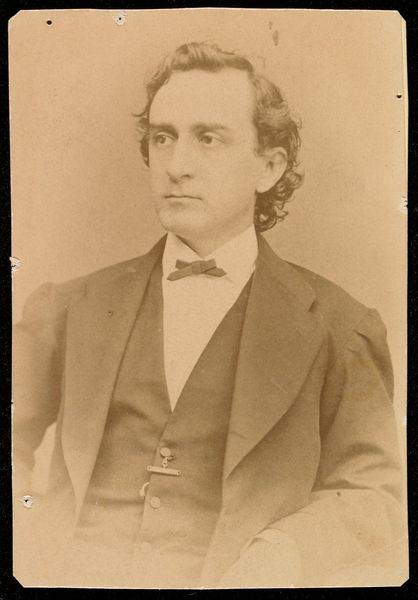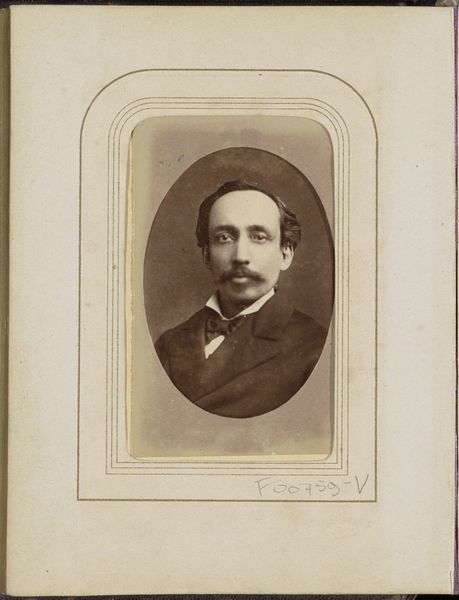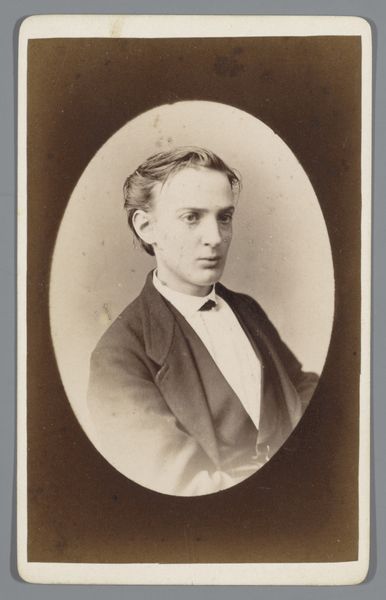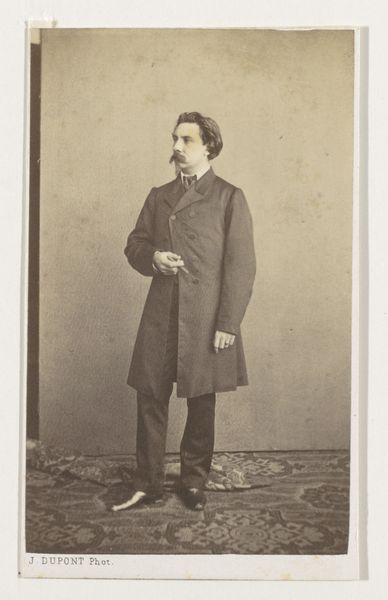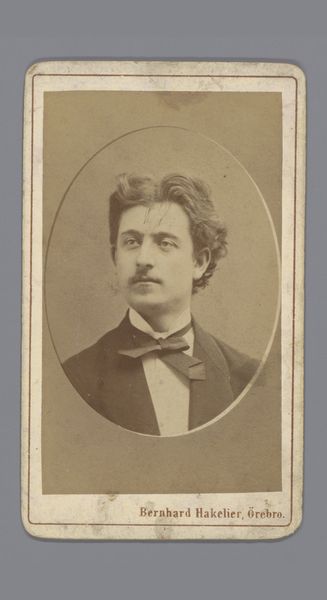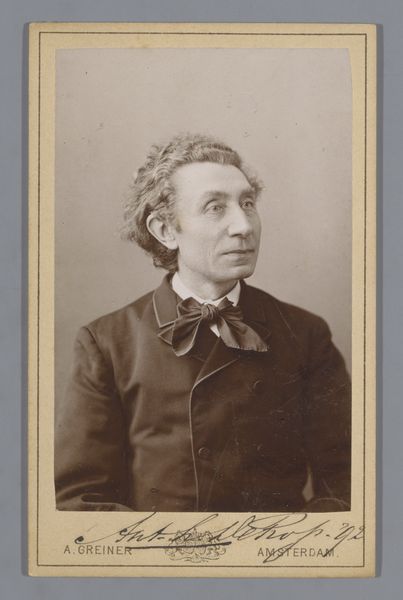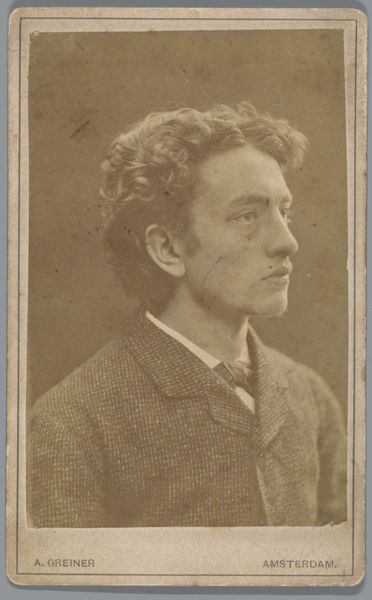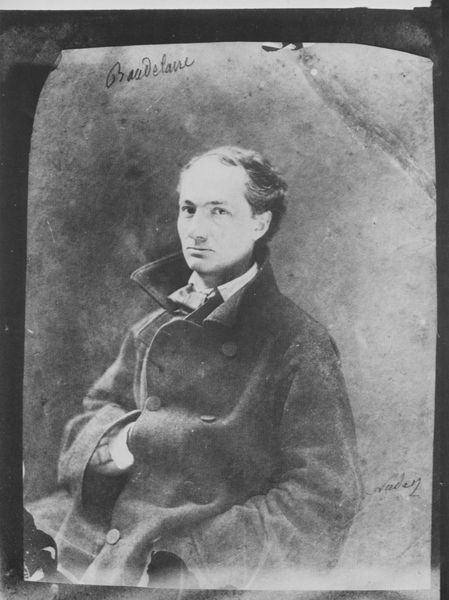
daguerreotype, photography
#
portrait
#
daguerreotype
#
photography
#
realism
Dimensions: image/sheet: 9.2 × 5.4 cm (3 5/8 × 2 1/8 in.) mount: 10.2 × 6 cm (4 × 2 3/8 in.)
Copyright: National Gallery of Art: CC0 1.0
Curator: This daguerreotype, attributed to Charles D. Fredricks around 1861, captures the actor Edwin Booth in profile. Editor: There's such a contemplative stillness about him. His hands clasped so formally, and his gaze directed slightly upward…it’s quite compelling. Curator: Photography at this time was becoming increasingly accessible, fueling a broader public interest in celebrity portraiture. Images like these helped cultivate Booth's image and contributed to his fame, distributed widely in publications. It cemented his role as a prominent figure in American theater. Editor: His somber expression evokes the tragic roles he was known for. It also reminds me a little bit of Hamlet contemplating Yorick's skull... his downturned mouth might reference some deeper personal turmoil. Curator: Indeed. In a sense, his identity was being constructed through these circulated images. Think of the context, though – this was right on the cusp of the Civil War. Many would have viewed figures like Booth through a politicized lens, adding a further layer to how this image was perceived and consumed. The association to national anxieties makes his sad expression poignant. Editor: I find it fascinating how such early photography carries with it not only the likeness of the subject but also something of their essence – perhaps even unintentionally. I wonder, looking at his furrowed brow, what thoughts were weighing on his mind during the exposure. Is this the performative persona or the private man? Curator: Precisely! These images served both as personal mementos and, increasingly, tools for shaping and disseminating public image in a changing world. Editor: A silent narrative, captured forever. One can imagine stories swirling around his likeness, layering image upon image across time and memory. Curator: This photograph, seemingly simple, unveils the intricate social and cultural roles that visual art began to play in 19th-century society. Editor: Agreed. It has me pondering on the layers of visual memory that images imprint and how the meaning shifts across decades and generations.
Comments
No comments
Be the first to comment and join the conversation on the ultimate creative platform.
